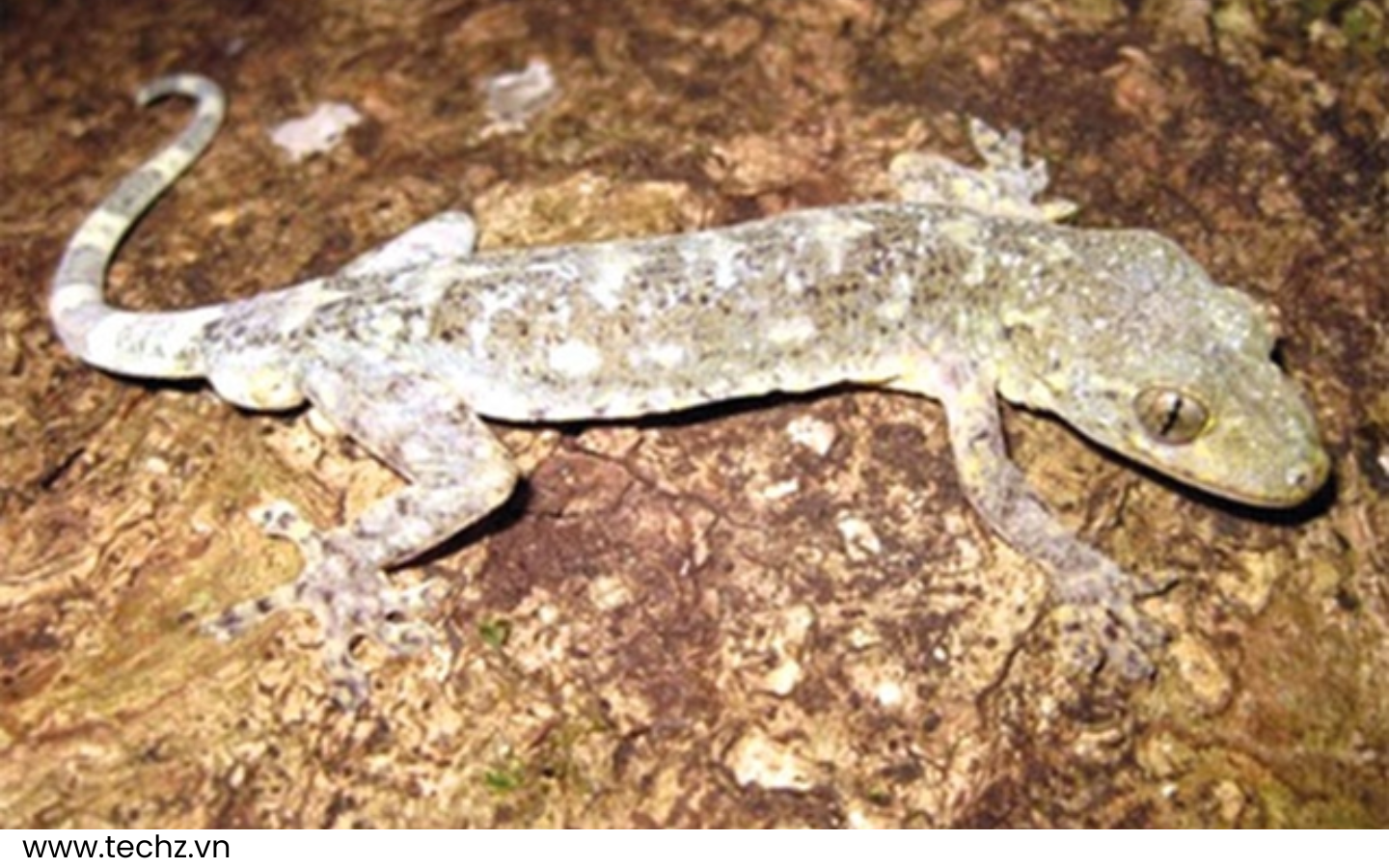
Science name: Gekko canhi – Rösler, Nguyen, Van Doan, Ho, Nguyen & Ziegler, 2010
Taxonomic: Animalia>> Chordata>> Reptilia>> Squamata >> Gekkonidae >> canhi
Species status: Endemic ; IUCN status: LC (Least Concern)
Description:
Physical characteristics: Gekko canhi is a medium-sized gecko species with a snout-vent length (SVL) of less than 100 mm. Its tail is round and not thickened at the base. The gecko has 12–14 supralabials, 10–13 infralabials, and 47–50 interorbital scales. It lacks webbing between its toes and has tubercles on its shanks and tail. Males have five precloacal pores, and both males and females possess tubercles on their tails.
Distribution and habitat:
Elevation: Found at elevations ranging from 200 to 1,500 meters above sea level.
Area: Gekko canhi is native to northern Vietnam, specifically in the provinces of Lang Son (Huu Lien, Huu Lung) and Lao Cai (Sa Pa).
Habitat: This species inhabits primary and secondary forests, where it can be found on limestone rocks. It is well-adapted to forest environments and can tolerate moderate forest disturbance.
Behaviour and ecology:
Lifestyle: This species is terrestrial and nocturnal, typically hiding in the crevices of limestone rocks during the day. It emerges at night to forage for insects and other small invertebrates.
Reproduction: Gekko canhi is oviparous, with females laying eggs in safe, concealed areas like rock crevices or similar sheltered environments.
Conservation and status:
IUCN Red List Category and Criteria: Listed as Least Concern (LC) due to its stable population, adaptability to disturbed habitats, and absence of major threats.
Threats: There are no significant known threats to the population. However, monitoring is recommended due to potential localized habitat destruction from forest degradation or human activities.
Conservation actions: Continued protection of its forest habitats in northern Vietnam is essential. This species benefits from the protected areas in which it resides and shows resilience to moderate habitat disturbance. Regular population monitoring is advised.
Crocodile Trail – The Best Birding Trail in Cat Tien National Park
If you’re a birder or nature photographer planning a trip to Vietnam, few places offer [...]
Cong Troi Trail – Top 1 Dalat Plateau Birding Trail Experience
If you’re a birder or nature photographer planning a trip to Vietnam’s Central Highlands, the [...]
How to Identify the Greater Sand Plover, Tibetan Sand Plover and Siberian Sand Plover
Identification Differences within the Sand Plover Complex: The sand plover group, which was traditionally divided [...]
Highlights of Cat Tien National Park Reptiles and Amphibian Endemics
Spanning over 71,350 hectares of tropical forests, grasslands, and wetlands, Cat Tien National Park is [...]
Highlights of Cat Tien National Park Mammals in a World Biosphere Reserve
In addition to reptiles and birds, Cat Tien National Park is also rich in mammals, [...]
Kontum Plateau Endemic and Highlight bird
Kontum Plateau Endemic And Highlight Bird species like Chestnut-eared Laughingthrush and top birding routes while [...]